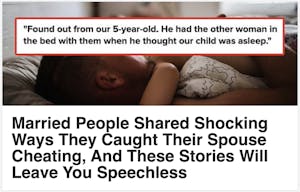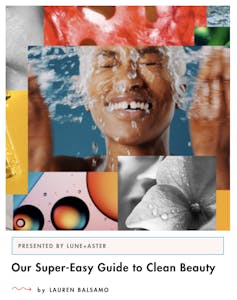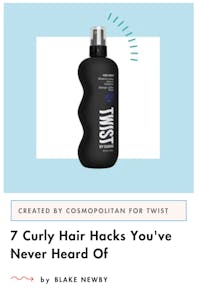
Titles have a lot of work to do. They need to be descriptive, SEO-friendly, and capture the readers’ attention so they’ll not only click but also read the content.
It’s not easy to pack all of this responsibility into just a few words, which is why many writers and publications turn to clickbait to drive more traffic to their websites. Clickbait headlines, titles, subject lines, and CTAs might be effective in driving traffic, but if it’s true clickbait — i.e. sensationalist or misleading — it will hurt your website’s trustworthiness and authority. (Read more on why this is important in our guide to E-A-T.)
This doesn’t mean that you should shy away from attention-grabbing titles. There are many clickbait-inspired formulas you can use to make your titles something even better: click-worthy. Combine this with excellent content that meets the readers’ search intent, and you’ll be well on your way to a winning content strategy.
Read on to learn what pitfalls of clickbait to avoid and how to make your titles click-worthy instead.
What Qualifies as Clickbait?
Clickbait is any title, headline, button, etc. that entices the reader to click through to a page only to find that the page doesn’t provide the value it promises. The term has an understandably negative connotation — it’s typically used to describe titles that are deceptive and only serve the website or business, not the reader.
You can recognize clickbait by these common pitfalls
- It’s vague: “You Won’t Believe What We Found…”
- It sounds too good to be true: “I Made $1 Million in a Month Doing This…”
- It relies on hype rather than value: “Try This Amazing Trick to Increase Sales!”
- It exploits fear and other strong emotions: “This Habit Could Be Killing You”
- It leaves out important information: In the example above, which habit?
- It doesn’t match the content of the article or page.

Here’s the thing: A lot of times, clickbait works. It gets clicks.
A 2014 study that analyzed 69,907 headlines found that those with extremely positive or extremely negative sentiments got more clicks.
Curiosity is another powerful motivator, which is why those cliffhanger titles led to so many clicks.
However, clicks aren’t the only measure of success. In addition to hurting your trustworthiness, relying on clickbait can result in an increased bounce rate and decreased engagement rate. So what can you do? Learn from the aspects of clickbait that work and combine them with high-quality content to attract readers and potentially turn them into customers.
11 Tips for Crafting Click-Worthy Titles
- Draft multiple titles before choosing one. It can be tempting to slap on a title when you’re done writing and hit publish, but most marketers find that their content performs best when they take time to brainstorm various titles. Type or write out a list and you’ll see that more ideas will come to you.
- Offer a solution to a problem. Readers turn to online content to be entertained, learn something new, or find a solution to a problem. If your post does the latter, make that clear in the title so readers know why they should click on it. For example “Avoid the Crowds with These 11 Off-Season Travel Tips.”

- Avoid overused superlatives and words that sound spammy. Look, we’ve all written an “ultimate guide” to something, and that’s the problem. When we see them constantly, these words lose their impact. The same applies for “amazing solutions” or “unbelievable results.” Instead, choose your adjectives intentionally, like a “step-by-step guide to a successful strategy,” and make sure your content delivers.
- See what’s in the SERP. When working on blog posts or articles, Google the keywords you’re targeting and read the titles of similar articles, then avoid repeating those titles! Craft something that will stand out from the bunch.
- Use numbers. “Crooked” or odd numbers tend to capture the attention of readers. Rather than 10 tips, offer 7 tips. This is another instance where the SERP is helpful. See how many items are included in similar listicles, and offer a few more than the competition.

- Speak directly to the reader. Call out who your post is specifically for to help drive qualified traffic to your website. For example, a “guide for complete beginners” will attract readers who are looking for a basic lesson on the topic, while “advanced tips for marketers” will attract readers who know the topic well and want some new or surprising content.
- Avoid ALL CAPS or too many exclamation marks!!! Your compelling, specific title should stand on its own without them.
- Test out brackets. This is becoming a more common element in blogging, and it works. You can use brackets to specify what readers will find in your post, such as [Case Study] or [Infographic].
- Show the writer’s expertise. For example, if you’re sharing the results of an experiment you conducted, you can highlight your authority as the writer in the title, such as “I Wrote Click-Worthy Titles for a Month: Here Are 3 Lessons I Learned.”

- Follow tried and true formulas, like “how to.” According to Semrush, 72% of marketers reported that “how to” titles drive the most traffic to their blogs. No need to reinvent the wheel — use what is proven to work!
- Evoke emotion and curiosity. One thing clickbait does well is stir up some kind of emotion. This can be useful in inspiring readers to click through and learn more. Just be sure that the emotion you’re tapping into is appropriate and in line with your content. For example, “7 Kid-Friendly Tips for a Harmonious Family Vacation” will appeal to busy parents looking for a stress-free trip with their kids. Check out our guide to power words for ideas on how to evoke emotion.
You want to avoid clickbait in the true sense of the word, but you can use these lessons to improve your click-through rate and get your content in front of the right customers. Ready for more tips? Read our blogging do’s and don’ts.




